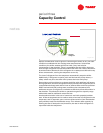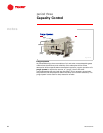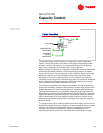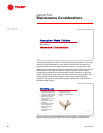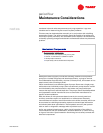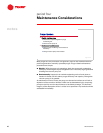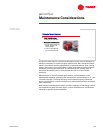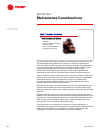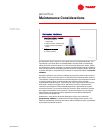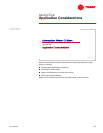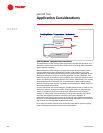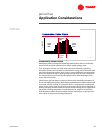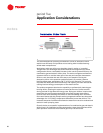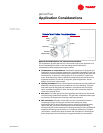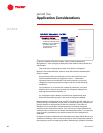
TRG-TRC011-EN 51
period four
Maintenance Considerations
notes
An absorption chiller requires a very deep vacuum to operate efficiently. The
introduction of air and other noncondensables into the chiller will adversely
affect the chiller’s performance. In a lithium bromide absorption chiller, where
the absorbent is a salt, corrosion is a potential problem that must be avoided. It
may not be possible to completely prevent corrosion inside the chiller, although
it can be reduced or controlled by the addition of a chemical called a corrosion
inhibitor.
Corrosion inhibitors are primarily intended to protect the steel components of
the chiller from the corrosive action of the lithium bromide-and-water mixture.
The inhibitor is added to the lithium bromide solution to promote the formation
of a thin protective layer of oxide quickly and uniformly over the steel
components inside the chiller. This coating is more impervious to the reaction
with water, resulting in longer life for the chiller. Corrosion inhibitors also
reduce the production of noncondensable gas that is generated during the
corrosion process. The corrosion inhibitor, however, does not directly protect
the copper components from corrosion. Corrosion protection for the copper
heat transfer components primarily depends on the materials selected to
assure maximum design life.
Additionally, most lithium bromide absorption chillers use a chemical
performance additive to achieve and maintain design performance. This
additive considerably enhances the rate at which refrigerant vapor is absorbed
by the lithium bromide solution.
▲
◆ Conduct annually or
semiannually
◆ Verifies corrosion inhibitor levels
◆ Verifies performance additive
levels
▲
◆ Conduct annually
Figure 60



